Google’s search engine results pages (SERPs) have evolved dramatically over the years.
Organic search results are increasingly being eaten up by PPC ads, the Knowledge Graph, People also ask boxes, and other SERP features.
Introduced in 2014, featured snippets quickly became a signal of new hope for many SEO pros looking to dominate “position zero.”
Until last year, earning a featured snippet meant greater SERP visibility.
The chosen organic listing appeared twice in Google’s Page 1:
- First, “above the fold” as the featured snippet.
- Second, as one of the regular Page 1 organic search results.
That all changed on January 22, 2020, when Google started removing duplicate URLs from SERPs containing featured snippets (a.k.a., deduplication).
This update, along with findings that featured snippets slightly reduce clicks to the organic search results as a whole, has caused some SEO pros to rethink whether landing featured snippets is still worth it.
To be fair, Google has also recently rolled out a significant change that seems to be good for both users and publishers.
For some featured snippets results, Google will take the users to the relevant text to the search query highlighted with a yellow background.
This is one of the few reasons why you may want to continue leveraging featured snippets as an organic opportunity.
Google’s Special Content Resource Blocks
Before we dive into the types of featured snippets (scroll down if that’s what you’re here for), let’s review a few definitions.
Special search results are known by a variety of names, so I want to make clear what is (and isn’t) a featured snippet.
1. Rich Answer (Not a Featured Snippet)
Rich Answers, also known as Instant Answers (formerly Quick Answers) are answered by Google, instantly, without credit to the site.
These answers typically cover short, factual things like how big the earth is (spoiler alert: 3,959 miles) or what’s 10 +2 (spoiler alert: 12).
Google says they don’t need to provide credit because these answers are part of the public domain.
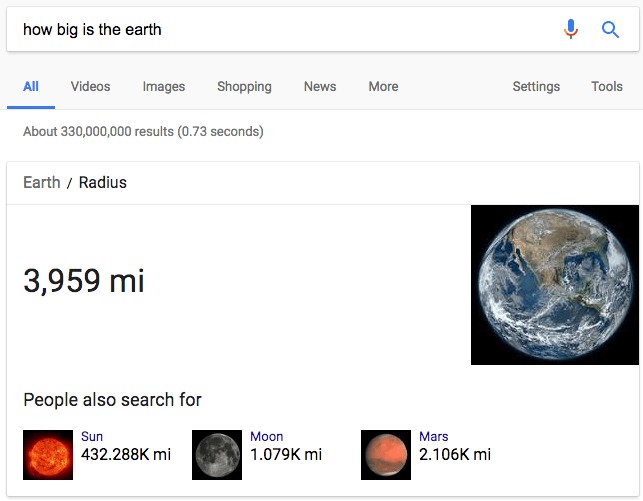
2. Knowledge Graph (Not a Featured Snippet)
Knowledge Graph answers often pull from a variety of sources and show up on the right in a big beautiful box or above the organic search results in a photo gallery (or carousel).
You’ll typically see these types of search results for brands, people, and organizations.

3. Rich Snippet (Not a Featured Snippet)
While they also use the word snippet, that’s where the similarities end.
A rich snippet enhances an organic search result, and often slightly expands its real estate, according to information marked up on the site using structured schema data from Schema.org.
These search results pop with rating stars, product availability, and pricing information, as well as photos for reviews.

What Exactly Is a Featured Snippet?
A featured snippet is a special block above the organic search results that Google sometimes shows for certain queries, usually questions (i.e., who/what/where/when/why/how).
It contains a summary (in the form of a paragraph, a list, a table, or a video), as well as the page title, link to the webpage from which the answer originated, and URL.
Featured snippets (sometimes called answer boxes) live at the top of the search results like Rich Answers and Knowledge Graph results, but they differ in that Google pulls the information from one of the organic listings on the first page of search results, and Google gives that website credit via a link.
With all three of these, Google is trying to make the searcher’s life easier: answering their questions within the search results, rather than forcing them to do additional research by clicking through to a website.
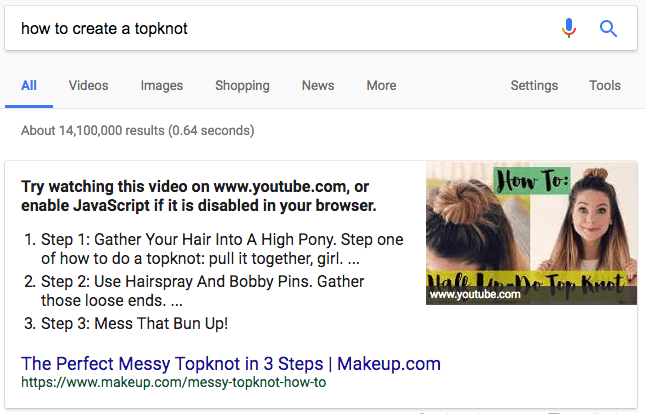
Types of Featured Snippets
Generally, featured snippets fall into one of three formats: the paragraph, list, or table snippet.

Let’s review what these look like in the search results, and what types of queries are best suited for each.
The Paragraph Featured Snippet
This is the quintessential featured snippet we all know and love.
Google extracts text from a page in an attempt to answer the searcher’s question.
The way to make this kind of snippet help, instead of hurt, your click-through rate, is by answering the question immediately, and then including additional information that sparks the searcher’s interest and encourages them to click through.
FAQ pages are perfect for answering multiple short questions at once, while dedicated blog pages are better for more complicated questions.

You’ll see paragraph snippets for questions like:
- How to do/get…
- Who is…
- Why is…
- What is…

The Numbered List Featured Snippet
These featured snippets often list out steps that explain how to do something, such as recipes.

What’s great about the example below is that it’s instantly clear that this will take you through the process step by step, but searchers are likely to click through to see accompanying photos or read the extra details.

You’ll see numbered list snippets for:
- Recipes.
- DIY tasks.
- How to…
- How do I…
The Bulleted List Featured Snippet
This is one where content managers and SEO pros can both rejoice.
Listicle articles are made for these types of featured snippets, whether you’re ranking items or simply listing them.

You’ll see bulleted list snippets for:
- Best of lists
- Ranked items
- Unranked items
- Feature lists

The Table Featured Snippet
Table snippets are surprisingly popular, making up 29% of all snippets. Google really likes to show off its capabilities with these.
It doesn’t just pull the information and spit it out the way it’s formatted – it can pull the specific information the user is looking for, and recreate its own table, as in the example below.
This website actually shows a sortable list of the top auto brands, according to 2016 and 2015 sales, % change year over year, and market share in 2016 and 2015.
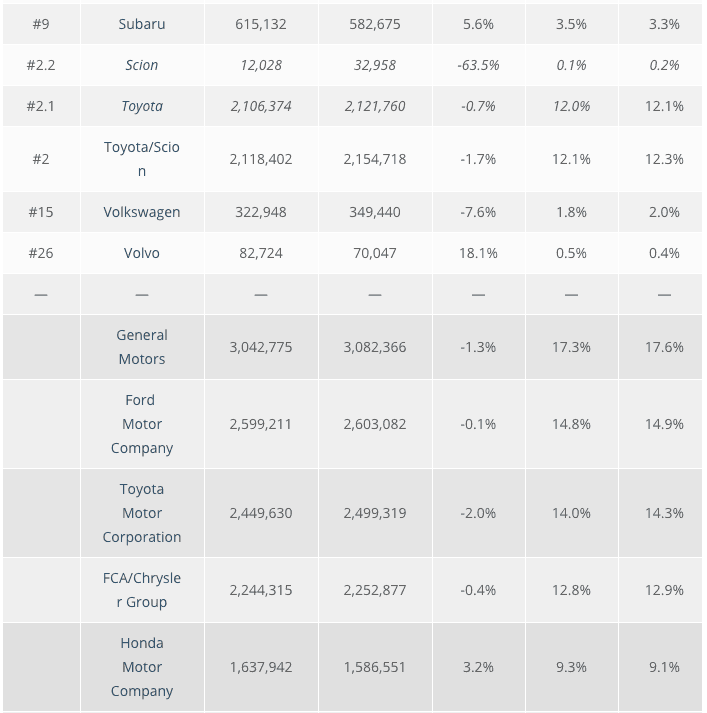
But because I searched for “2016 car sales,” Google scrolled to the bottom of the table to pull just what I needed and created its own table listing the aggregate numbers by brand for 2016.
The above example is a sortable, dynamic table, but you don’t have to be fancy for your table to rank as a featured snippet. The information Google pulled for the following snippet is a simple, static, non-sortable table.


Featured snippet tables can also be more than one column, so don’t feel limited by the amount of information you show.
In fact, when aiming to rank for a table featured snippet, remember that size can work in your favor: make sure your table has more than four rows to increase the chance of people clicking through to your site.
You’ll see table featured snippets for:
- Lists
- Pricing
- Rates
- Data
The YouTube Featured Snippet
When you think of featured snippets, think beyond your website. Google pulls these from YouTube as well.
So make sure you’re optimizing your videos to get chosen.
Google may show a specific clip from the video itself:
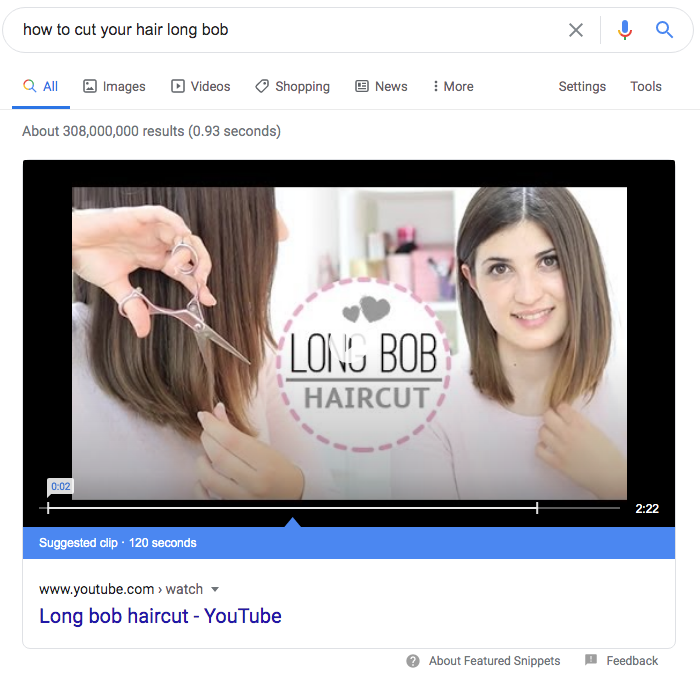
Or answer the searcher’s question using text from your video description:
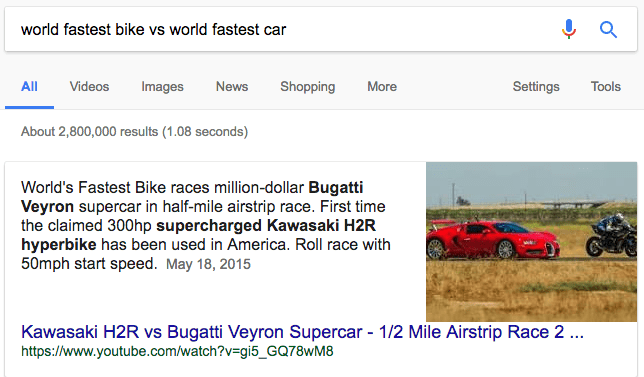
You’ll see YouTube featured snippets for:
- Any type of query that merits a featured snippet, with the exception of tables (which are hard to illustrate via video).
The Carousel Snippet
With carousel featured snippets, Google suggests related keywords a user may be searching for in little bubbles at the bottom (or top) of the snippet.

Once any of these keywords are clicked, the content of the featured snippet changes (as do the search results below).
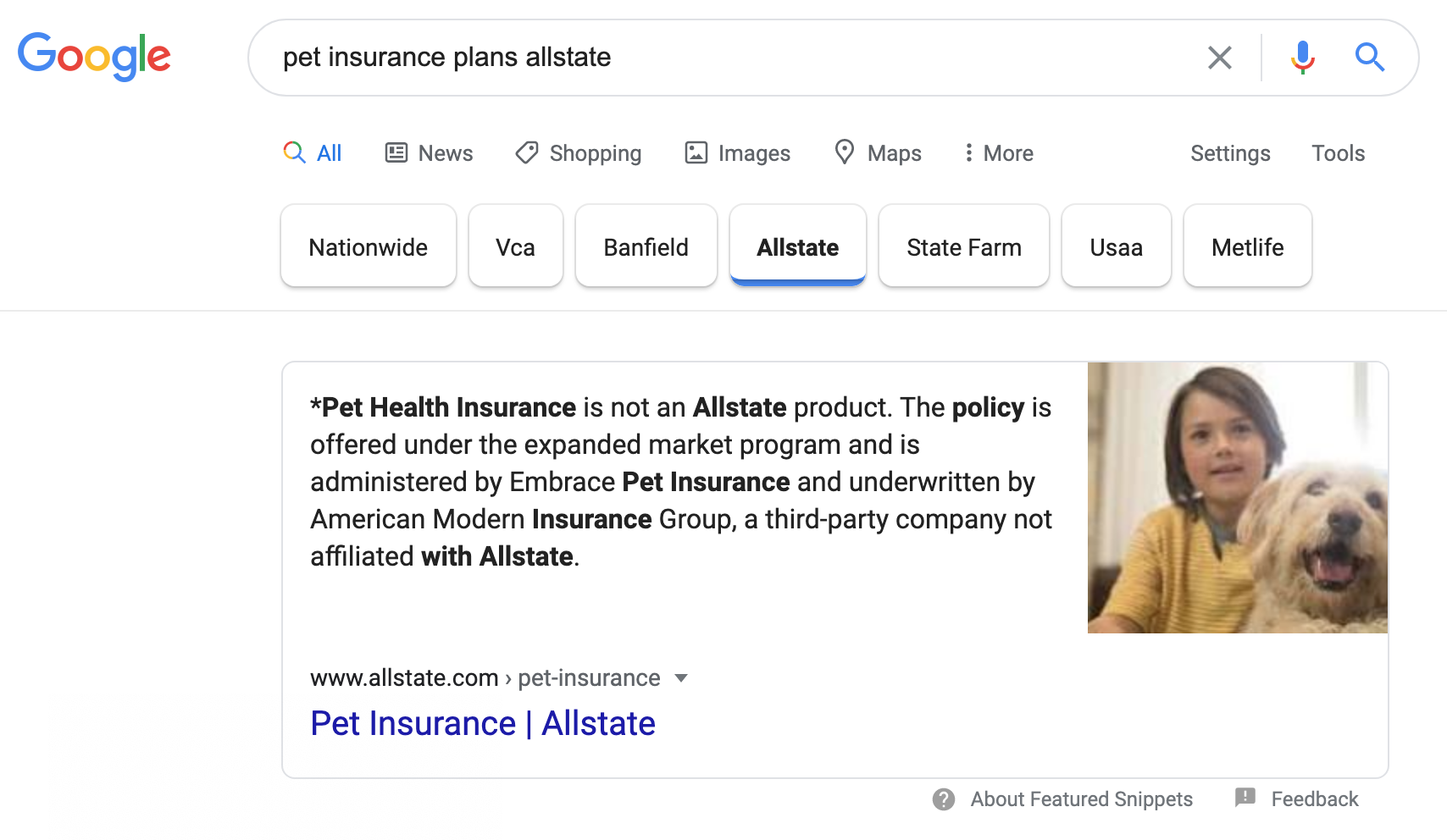
According to Moz research:
- About two-thirds of the bubbles come from websites that were displaying in spots 2 through 10.
- The other third come from other sites that weren’t ranking for the original search query.
That means your website has multiple chances to snag this featured snippet spot, even if you didn’t get it the first time around.
The trick?
Making sure your content comprehensively covers a topic, from soup to nuts.
You’ll see carousel featured snippets for:
- Any type of query that requires deeper research, or further refinement to deliver a simple answer.
- Queries where the answer changes based on the refinement (such as comparing dog insurance plans or banking fees).
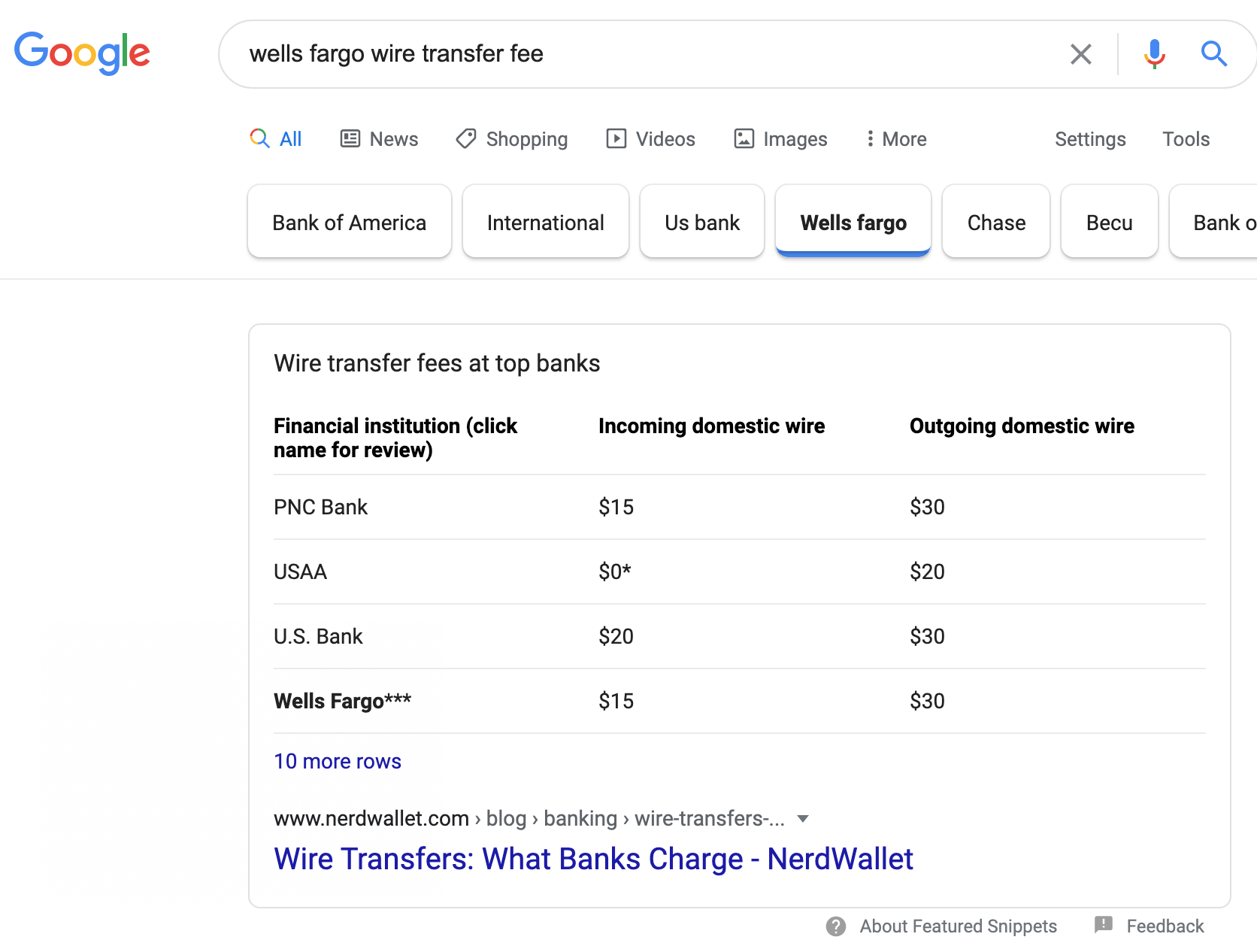
The Double Featured Snippet
The double featured snippet is just what it sounds like: Google displays two featured snippets, instead of just one.
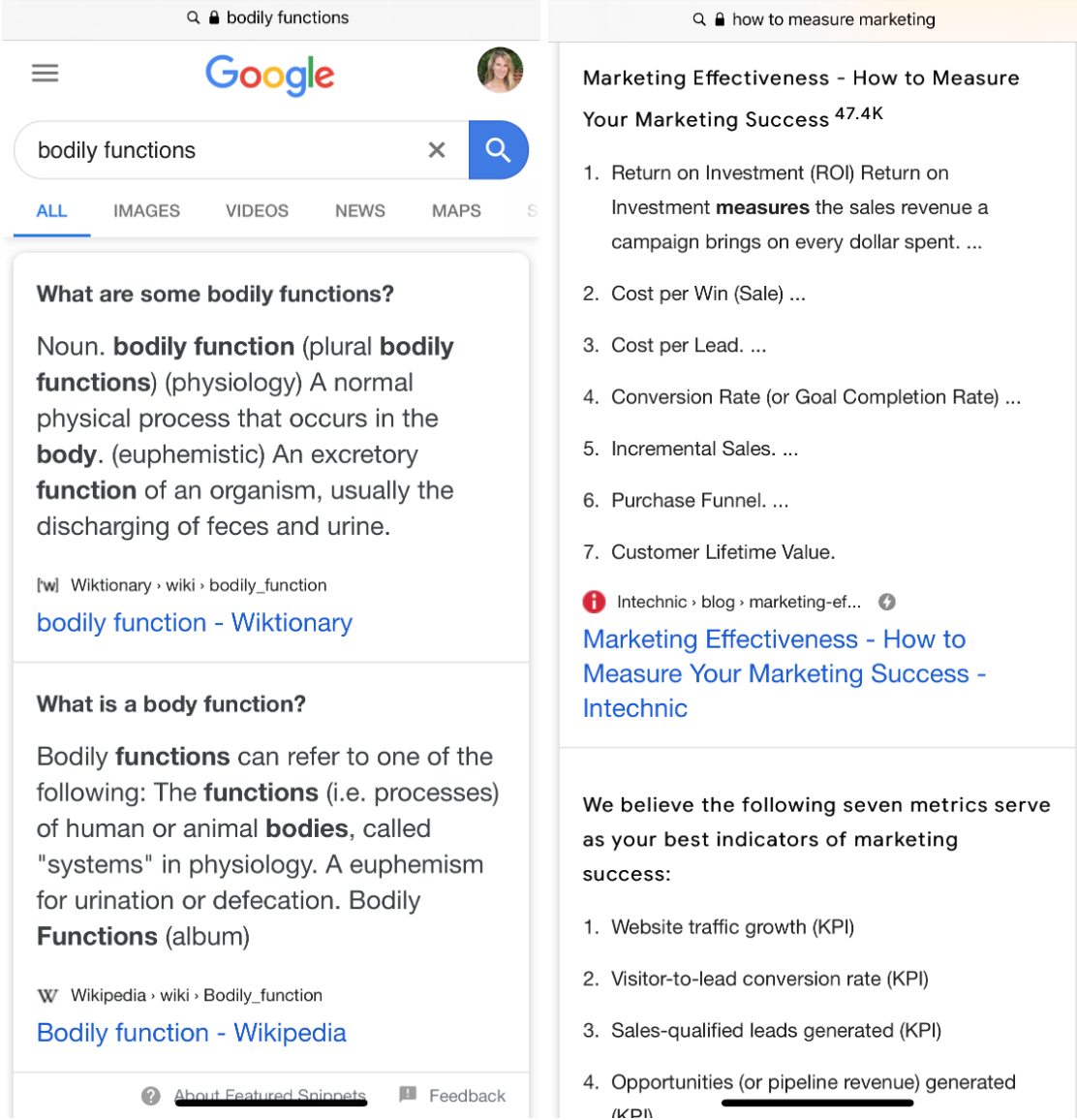
With these snippets, Google is trying to cover their bases.
In case their pick for the first featured snippet doesn’t satisfy the user intent for a particular query, they’re hoping the second one will.
The good news with double featured snippets is that you have double the chance of being featured.
The bad news is that if you’re in spots 3 through 10, your click-through rate decreases significantly.
You’ll see double featured snippets for:
- Queries where Google is unsure of the user intent.
- Keywords that could have multiple meanings, definitions, or interpretations.
The Two-for-One Featured Snippet
Not to be confused with the double featured snippet, there’s also the two-for-one, or combined, featured snippet.
Sometimes Google pulls from more than one site to answer a person’s question, as in the example below.
The text is from Cosmopolitan Magazine while the image is from YouTube.
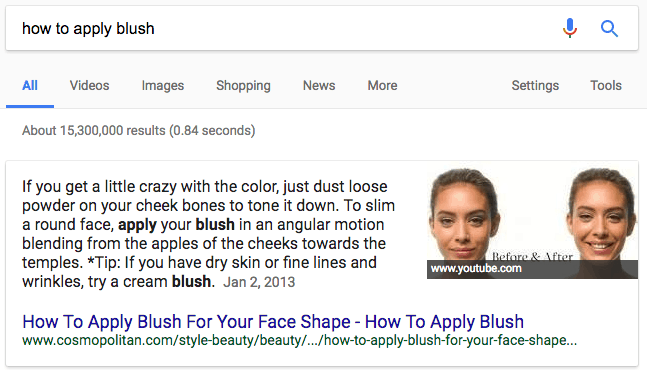
Increase your chances of ranking for a featured snippet by including helpful, illustrative imagery with your content.
You’ll see two-for-one featured snippets for:
- Any type of query that merits a featured snippet and could be better illustrated with an image.
How to Win at Featured Snippets
Now that you know what featured snippets are available, how do you go about ranking for these?
Here are a few best practices.
1. Perform Keyword Research, with a Particular Focus on Questions
Questions provide the best fodder for featured snippets.
Paid tools like Ahrefs and SEMrush let you see which of your keywords are already ranking for featured snippets, and which ones aren’t (but another site is).
Free tools that let you see top long-tail question keywords include the “People also ask” sections in Google or AnswerThe Public.
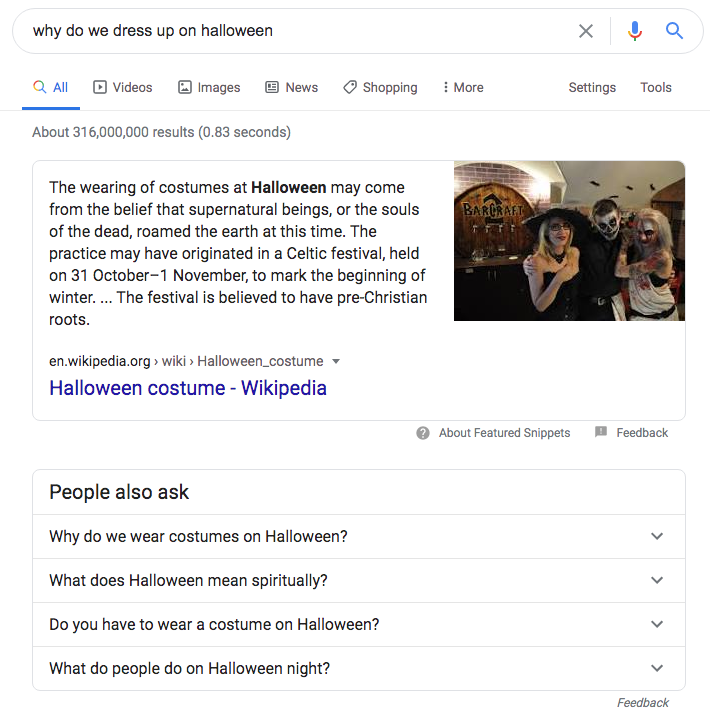
2. Create Content and Imagery That Specifically Address the Keyword
Featured snippets tend to show just a few lines of a table or text (54-58 words, to be exact).
Ideally, you answer the question with an introductory sentence or two, and then dive in deeper with supporting content.
Here’s an example of a blog dedicated to a single long-tail keyword, and an accompanying image with alt text matching the keyword.

3. Make It Easy for Google to Read with Proper Formatting
Steps 1 and 2 are the meat and potatoes, but you can’t forget the salt and pepper.
Format your page using basic HTML tags so Google can scan it better.
This means <h2> and <h3> tags for the questions or bullet points, <p> paragraph tags for the text, and <ol> or <ul> and <li> for the list items.
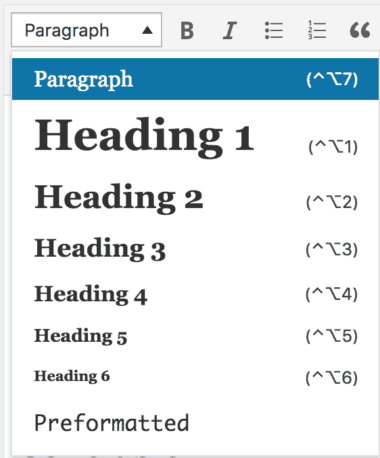
Conclusion
Featured snippets will continue to show up for an increasing number of queries as Google gets smarter and more people start using voice search.
Anyone can get a coveted featured snippets.
Now you know how to get started.
So get to optimizing!
More Resources:
- Google Featured Snippets: An Up-to-Date SEO Guide
- Unpacking the CausalImpact of Google’s Double-Dipping Featured Snippet Update
- Are Google’s Featured Snippets Stealing Clicks? It’s Complicated
- 9 Tips on How to Rank for Featured Snippets
Image Credits
Featured image: Alexas_Fotos/Pixabay
All screenshots taken by author





